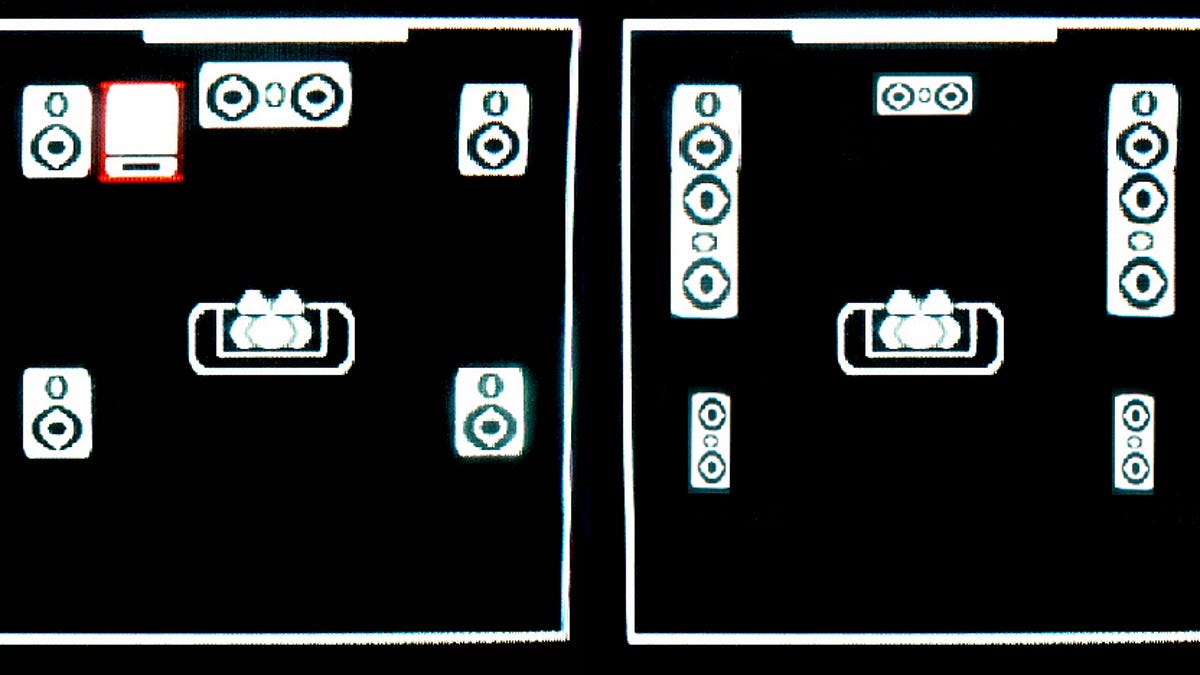Hi-fi vs. home theater speakers; what's the difference?
Speaker buyers take note: home theater bombast requires a very different skill set than reproducing the sound of a string quartet or Led Zeppelin.

A lot of people think good sound is good sound, but music and movies have very different requirements. Starting with home theater, remember that today's films have nearly unlimited soft-to-loud dynamic range; dialogue is mixed to the center channel; surround effects may be ambient or point-sourced; and deep bass demands can be extreme. Just about every feature film released over the last 20 years has a multichannel soundtrack.
How different is music? Let me count the ways: an exceedingly small number of new music recordings are available in multichannel sound; stereo rules in the music world; most, probably 99 percent of all music recordings are dynamically compressed; and deep bass effects are almost nonexistent. For home theater the subwoofer's prime responsibility is supplying room-shaking low-frequency effects; for music you need a sub that delivers pitch-accurate, tightly controlled bass, perfectly integrated with your speakers. Stereo imaging may play a large role for some music listeners, but home theater imaging duties are distributed over more speakers, so the demands are lower for each speaker.
Movies' wide dynamic range demands are linked with high volume capability. That ups the power requirements for home theater over music-oriented systems. For home theater sound plays a supportive role; video quality and onscreen action grab the lion's share of your attention. By contrast, a music-oriented system's sound quality succeeds or fails on its own, so music systems need to be more tonally accurate and sonically believable than home theater systems to achieve the same level of perceived sound quality.
The center speaker's sound makes or breaks a home theater, so if you're primarily using the system for movies, go for the best center-channel speaker you can afford. On the other hand, if you listen to 10 hours of music for every hour you watch a movie, put the majority of your speaker budget into the front left and right speakers. You might consider not even buying a sub, and use truly full-range speakers. In other words, put the money where it does the most good. The five identical speakers model is nice in theory, but if you're listening to more music than movies, that approach shortchanges the quality of the main left and right speakers.
Here's a real-world example of my approach, starting with a music-oriented Definitive Technology theater speaker system. I'd go with BP-8080ST towers ($1,499 each) for the front left and right channels; one of its smaller matching centers, the CS-8040HD ($499); and a pair of ProMonitor 800 surround speakers ($145 each). The towers have built-in subs, so there's no need to add a separate sub. For a theater-oriented system with close to the same MSRP, I'd use the smaller BP-8020STs towers ($599 each); the bigger CS-8060HD center speaker with built-in sub ($699); SR-8080BP surround speakers ($349 each); and a SuperCube 1 sub ($1,199). The prices of the two Def Tech systems are close, but tailored to home theater or music applications. I just happened to use Definitive in this example, but the same theater vs. music balancing approach can be applied to any speaker brand, or any price range.
Of course if you rarely watch movies, ditch multichannel sound altogether and stick with pure stereo. That way you can invest in even better speakers and stereo electronics, and maximize the sound quality per dollar spent. The fewer boxes you buy with the same amount of cash, the better those boxes can be.
I covered this subject in greater detail in a recent issue of Home Theater magazine.

